Testing, Testing, Training - Michaela Keller-Miller
- Posted on
- By Michaela Keller-Miller
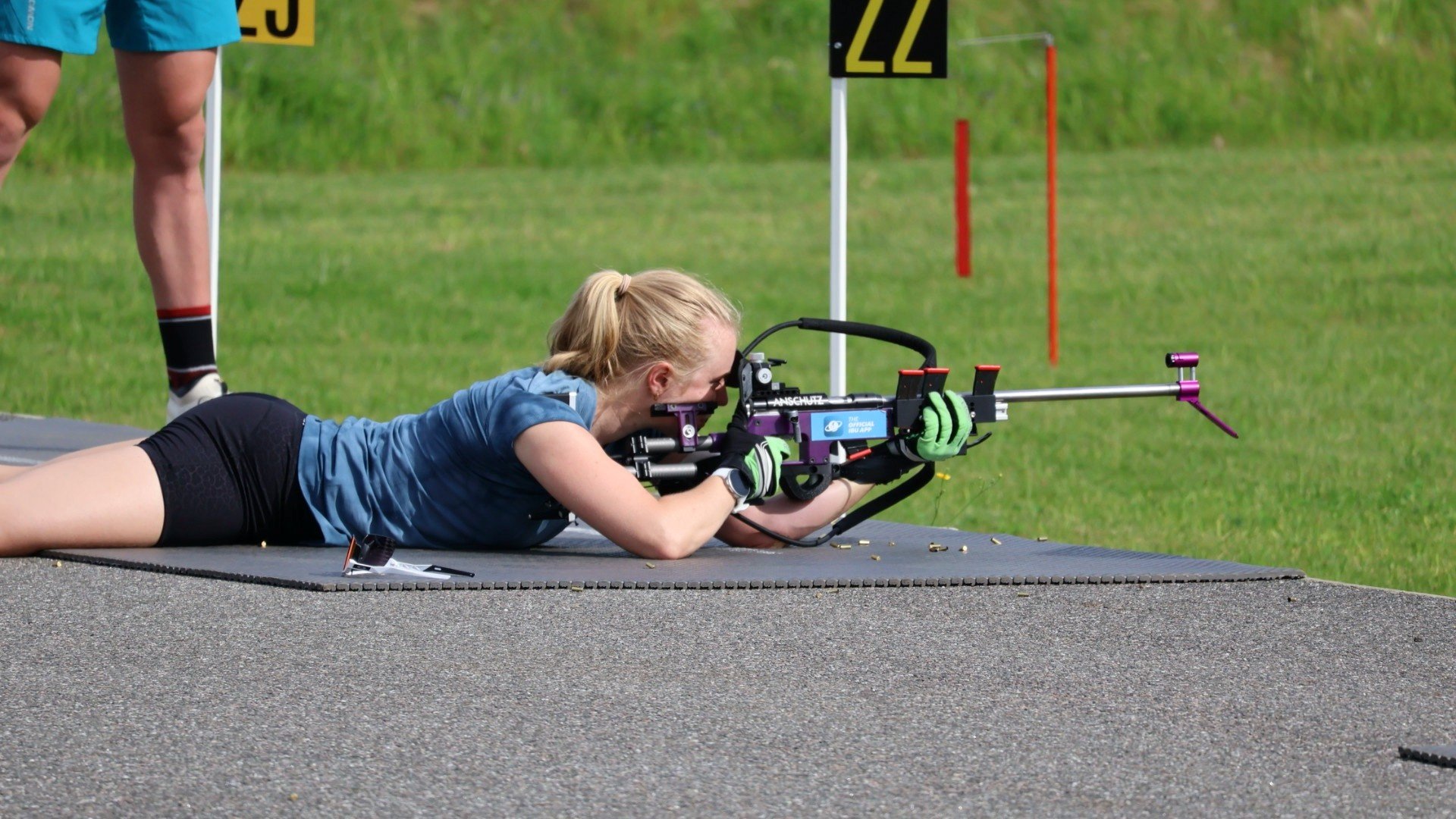
Testing, Testing, Training
Summer training inevitably spurs questions from those curious how skiers train without
being able to ski on snow. The short answer is that we roller ski (a lot) and add running,
biking, and lifting. What each athlete does with these initial building blocks varies from
person to person, but it’s usually fairly formulaic while allowing a degree of flexibility. I’ll
expand on this as I walk through what I’ve been up to this past month.
I kicked off June in Lake Placid, New York for a US Biathlon camp with the US
Development Group. There was a massive crew there, as we were joined by both the
National Team and the Junior Team. This was a great learning opportunity since
shooting is still new to me. Full group shooting drills pushed me to see what the
standard is in terms of speed and accuracy. Other than the added shooting component,
biathlon training is essentially the same as cross country ski training.
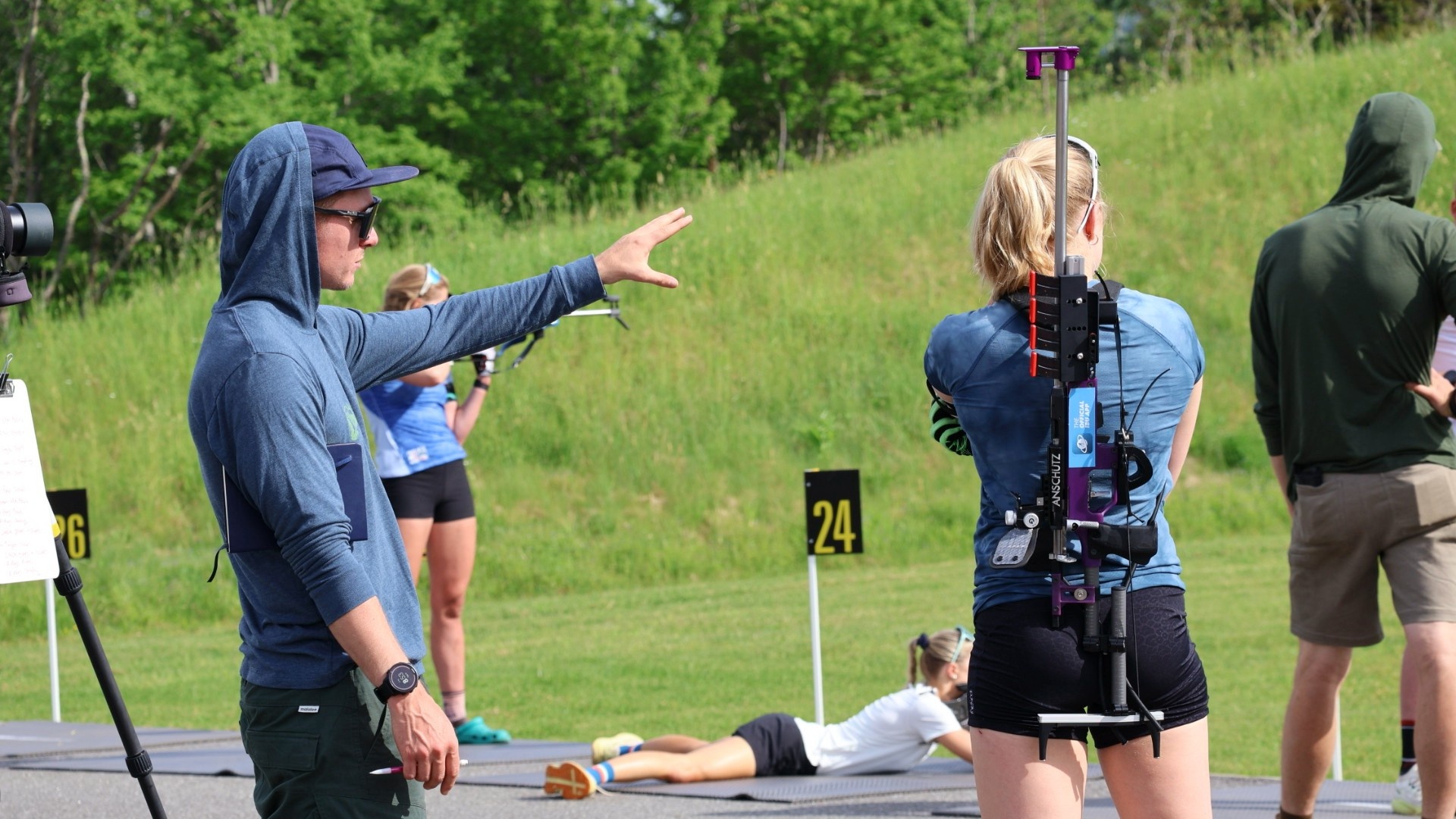


Range time in Lake Placid.
The basic summer training formula starts with a three- or four-week training block. This
summer, the Green Racing Project and I are following a four-week block, although
we’ve used a three-week block in the past. Both are equally effective in my experience;
four-week blocks do require an extra level of vigilance since the rest week comes one
week later than in a three-week block. Managing energy levels and backing off when
needed is necessary to avoid digging a hole too early in the block.
A four-week block involves three weeks of heavy training, followed by one easier rest
week. I usually take one off day during each of the heavier weeks (no training!) and up
to three off days during the rest week depending on how much recovery I think I need to
be ready for the next block. Personally, I shoot for between 18-22 hours per hard week
and 8-10 hours for the easy week. This includes distance workouts, intervals, and lifting
in the gym. These hours can vary significantly depending on someone’s age or training
background. I strongly (!!) discourage grinding through extreme fatigue for the sake
hitting a certain hour goal. While helpful in creating structure, hour goals are a mere
guideline rather than an end-all. It took me many years to handle my current level of
training; there are still many, many people who train more hours than me, and that’s
okay!

Kelsey and me during a trail run up Mt. Marcy in Lake Placid.
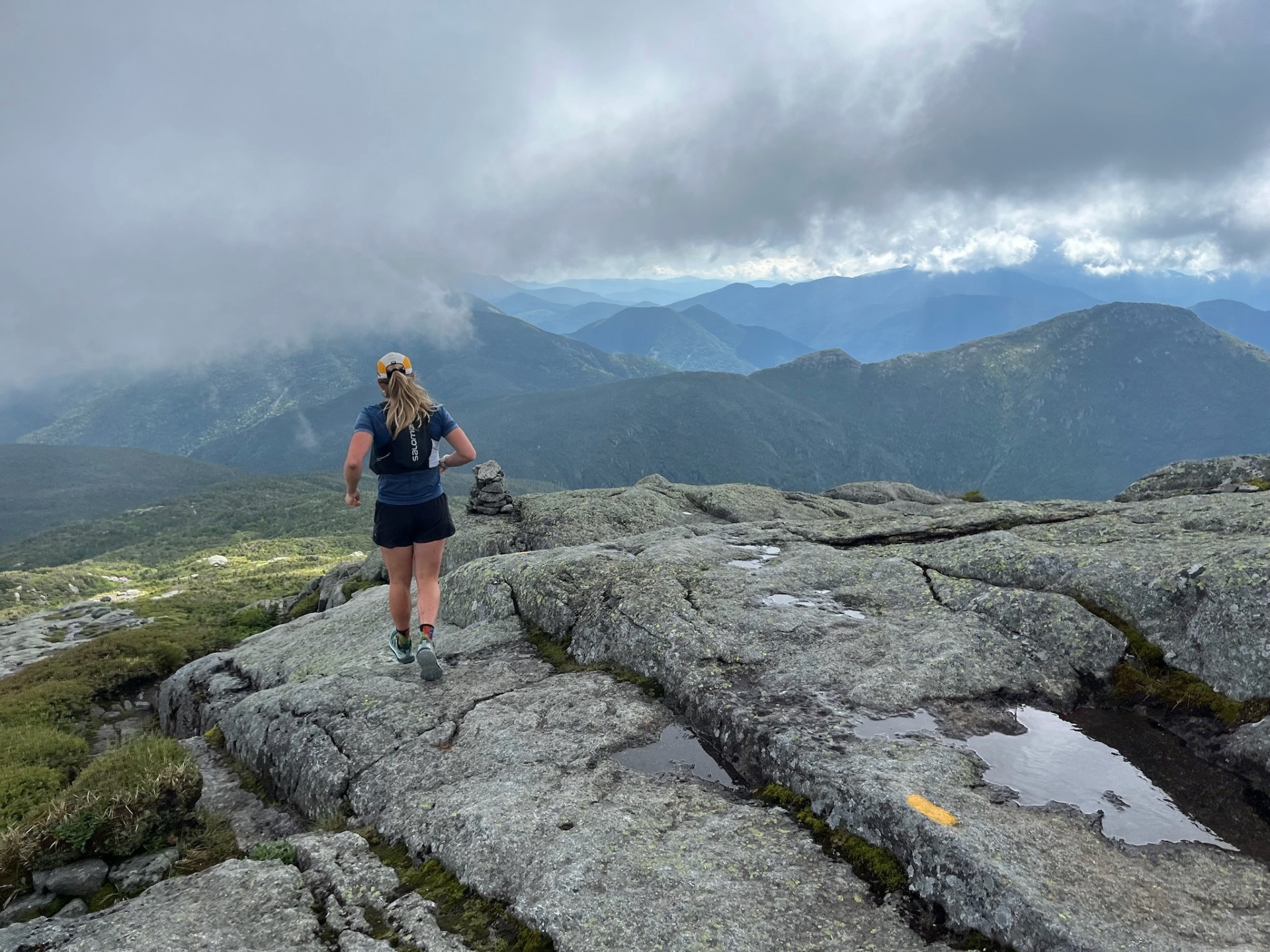
Kelsey descending Mt. Marcy.
Each hard week is basically comprised of one or two interval sessions, one speed
session (<30 second sprints), two strength workouts, and one or two over-distance (3+
hours) workouts. The additional hours are easy distance. Again, managing energy on
easy sessions is important to be sure the harder sessions are high quality. I think the coolest
part about ski training is how flexible it is. While I’ve laid out the basic building blocks of
my training, these can be rearranged, removed, or added back depending on how I’m feeling on any given day. As long as I’m putting in the work, it doesn’t terribly matter how the blocks are arranged.
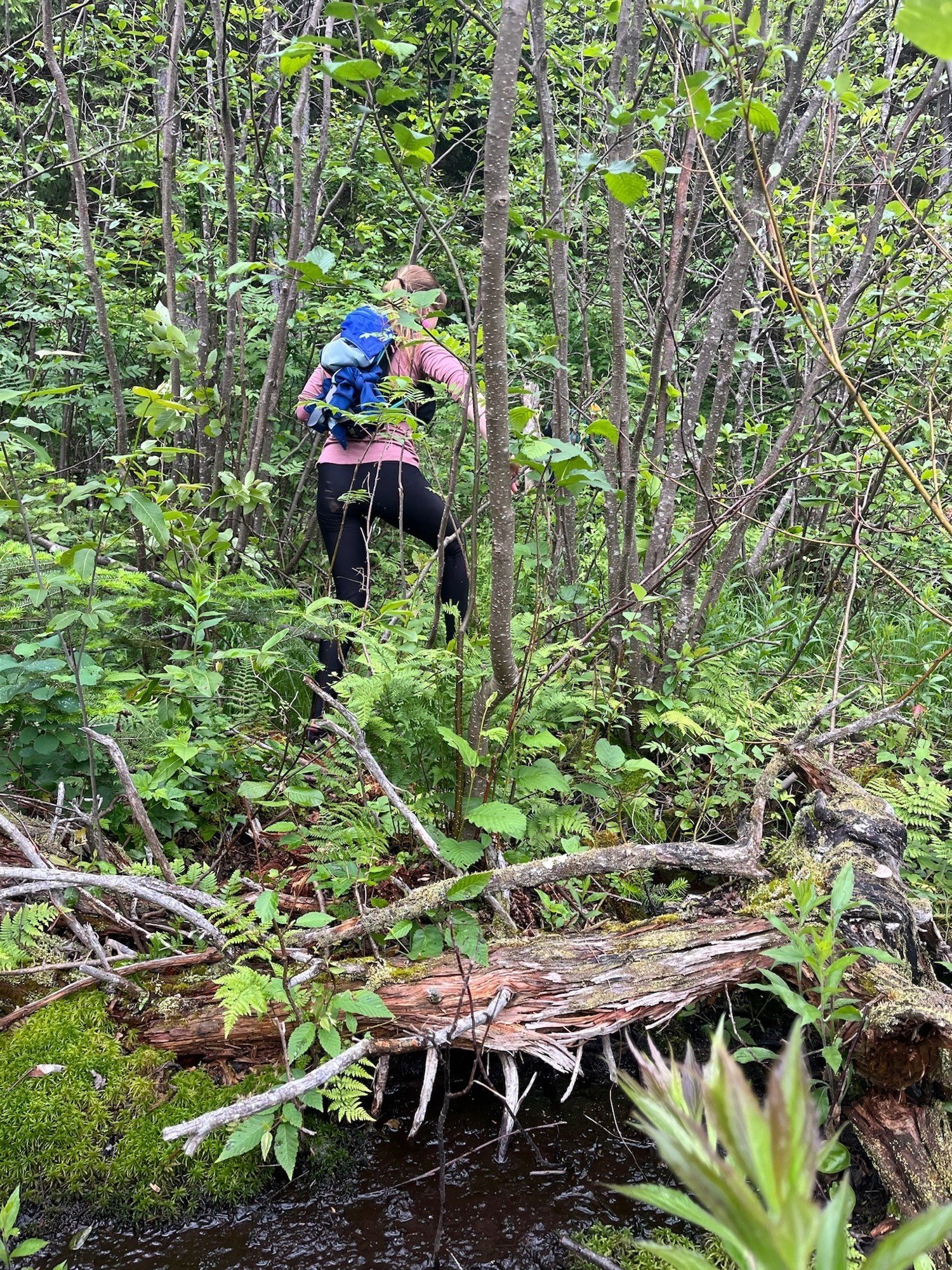
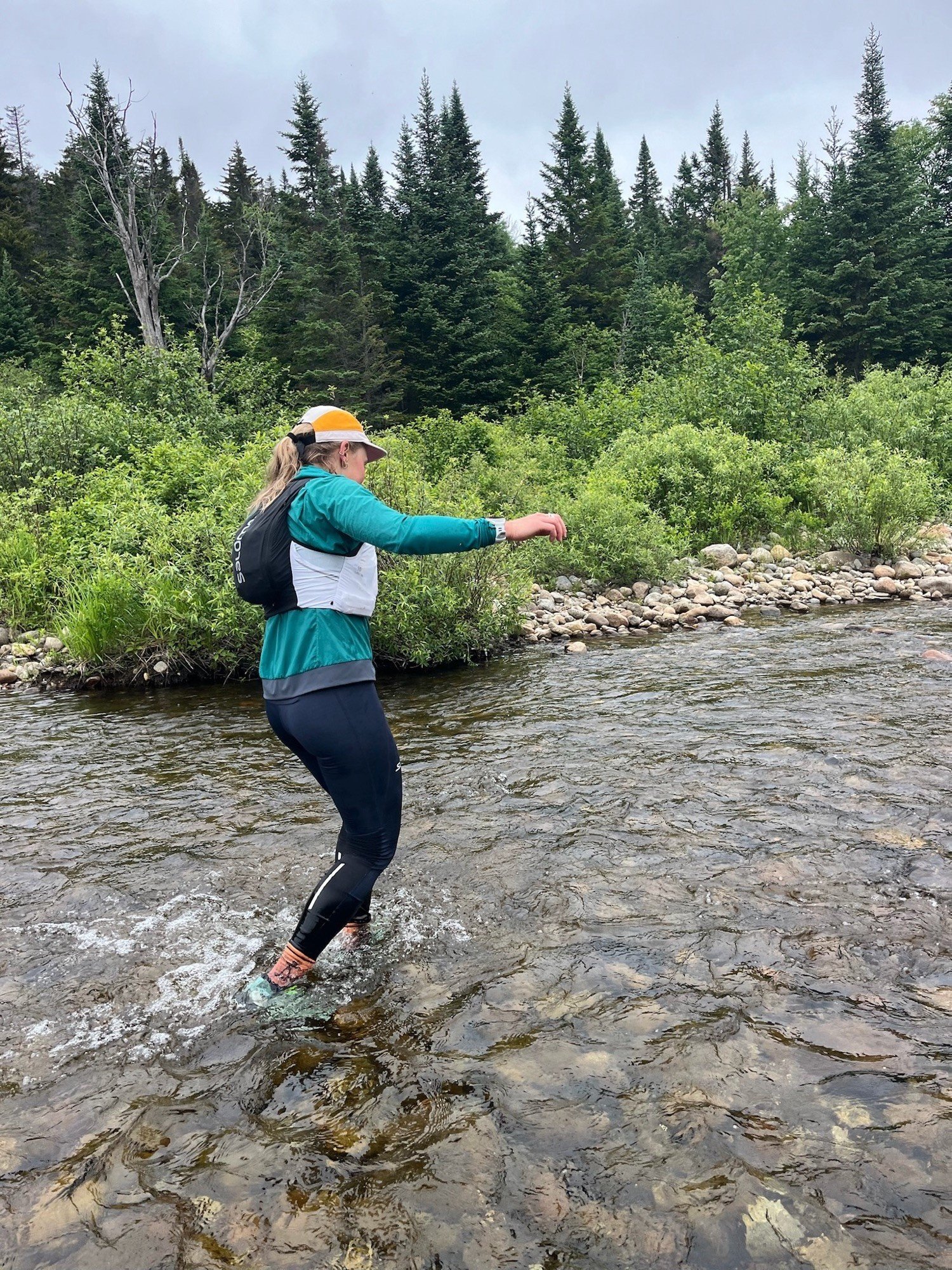
Highlighting the flexibility of summer training: an over-distance trail hike/run that turned into a swamp trek.
Early summer intervals are typically level 3 (L3), which is a comfortably fast pace that
can be maintained for at least 60 minutes. We use lactate monitoring to be sure we’re in
zone; a general guideline is between 2.5-4.0 mmol/L for L3. Level 3 is a great time to
work on ski technique at speed and to improve sustainable speed. For those looking for
workout ideas, here’s the rundown of L3 workouts I’ve done in the past few weeks:
- 6x8 minutes run with poles up the ski mountain in Lake Placid (if no mountain,
running with poles is also very effective on rolling ski trails!)
- Note: Adding poles is a great way to involve more of the muscles required for skiing.
- 2-3 minutes recovery in between each interval
- 65 minutes continuous uphill L3 skate roller skiing up a mountain road in Lake Placid (this does require a fairly long uphill stretch!)
- Focusing on gliding over each ski and skiing relaxed

View from the top of the road after continuous L3 intervals.
- 5x full loop on the Craftsbury rollerski track in L3 (about 10:30-11 minutes each)
- Paired with biathlon combos (practicing shooting with a heart rate)
- 2-3 minutes recovery in between each interval
- 4x10 minutes L3 run with poles on ski trails, followed by 6x30 seconds all-out uphill
- This was an easy week interval workout to wake back up after several off and easy distance days.
- L3 portion of the workout involved biathlon combos.
Another notable component of this summer’s early season training has been testing.
The Green Racing Project does multiple 2k tests on the Skierg each year. While it’s fun
to see how times or VO2 max numbers progress, our ski coach Pepa does this testing
to see whether training needs to be tweaked for each individual athlete. I’m not super
knowledgeable on what the different testing results mean; from a simplistic view, they
allow Pepa to see whether our training has been effective from one test to the next and
whether any changes in training need to be made.
Pushing during the 2k Skierg test.
At biathlon camp in Lake Placid, we also did a treadmill step test protocol with the
Montana State University sports science department. This involved skiing on a treadmill
at increasing speeds until failure. Prior to each speed increase, our lactate levels were
tested; these numbers in conjunction with heart rate data allowed them to create a
lactate profile. These are helpful to confirm heart rate zones for different intensity levels
(i.e. level 3 zone for L3 intervals). We also had several sensors on our body, boots, skis, and poles that showed various biomechanic factors such as glide time, push time, and left vs. right foot force. This helps find inconsistencies that may require technique adjustments.
Biomechanic and lactate zone testing on the ski treadmill.
Testing aside, summer training has been unextraordinary in a good way. There’s no
special formula; so long as I’m checking the boxes (strength, distance, intervals, speed)
and working hard, I know I’m doing what I can to be ready for the winter. Even better, I
get to spend time having fun and logging hours with my teammates!
Have fun building that base,
Michaela Keller-Miller
